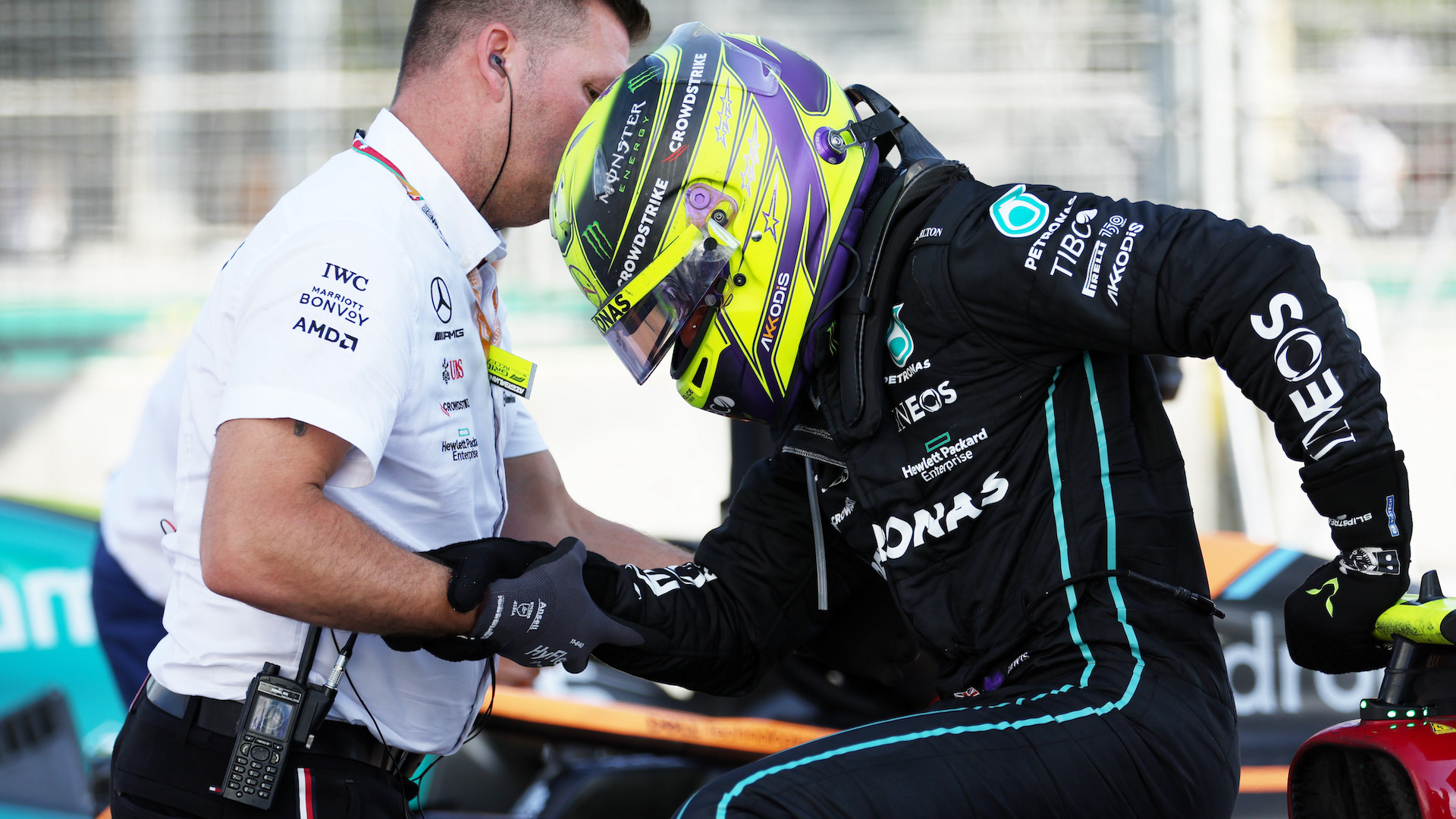

Formula 1 cars have drastically improved wheel-to-wheel racing in 2022, but there’s been a downside to this: ground effect downforce is literally shaking drivers quite severely. Whether porpoising (the effect you’ve seen this season where drivers’ heads bounce up and down) or the floor of the car bottoming out, repeated violent movements are starting to cause serious problems across the grid. More specifically, Lewis Hamilton visibly struggled to climb out of his Mercedes after Sunday’s Baku Grand Prix, where he finished fourth.
F1 drivers can be a bit whiny, as they have to be super picky about getting the car in the exact perfect window to extract every tiny ounce of performance out of it, so they get very particular about every little detail. As a result, sometimes a casual spectator can think that they’re complaining about something minuscule and unimportant, but that’s really not the case most of the time.
F1 drivers are fit and strong, and would rather drive in pain than sit a race out because they’re sick or hurt (like Lando Norris did a few weeks ago in Barcelona), so when they say they’re hurt it means they’re really hurt. A good example of this is when Ferrari and Alpine drivers Carlos Sainz and Esteban Ocon talked about the violent effects of their Miami crashes.

Hooning a car around at over 230 mph is always going to be a physical experience. Single-seater race cars lack suspension in any conventional sense and the driver gets shaken around a lot. Most of their physical training focuses on spinal and neck support to cope with the forces, this is what makes Hamilton’s audible and visible pain extremely concerning.
“I just got through that race on adrenaline, biting down on my teeth through the pain,” said Hamilton after the race. “I can’t express the pain that you experience, especially on the straight here. And at the end, you’re just thinking of all the people relying on you for the points.”
Hamilton’s teammate, George Russell (one of the directors of the GPDA, the F1 driver union that primarily acts on safety) said it was only a matter of time until someone lost control of their car. “I think it’s just a matter of time before we see a major incident,” he warned after qualifying in Baku. “A lot of us can barely keep the car in a straight line over these bumps. We’re going around the last two corners at 300 kilometers an hour, bottoming out. You can visibly see on the tarmac how close the cars are running to the ground.”
Most worryingly of all, halfway through Sunday’s race, Hamilton said that the “seat had gone cold.” There’s no explanation for that; the fire extinguisher hadn’t gone off and the air temperature was still high, an F1 car is definitely not a cool place to be, with track temperatures way over 113 degrees Fahrenheit. Maybe it was just a freak incident but sudden temperature changes can imply nerve pressure. And he wouldn’t be the first.
Haas F1 driver Kevin Magnussen, whose chassis and power unit are completely different from Hamilton’s, has already had nerve damage from the repeated compressions. One of his trainers, Nikolaj Madsen, told PlanetF1 that after the Australian Grand Prix Magnussen “talked about how he had some nerve pain going out in his arm and in his jaw. I talked about it with him and we kind of saw that it was because of the bouncing. The spinal cord just pushed, pushed all the time on the nerves.”

Sainz has said before that there are long-term health implications from the bouncing and numerous other drivers have come forward to say it’s a problem. In fact, possibly the only team for which it isn’t a problem is Red Bull, who currently leads both championships. Red Bull says they’ve been smart enough to fix it, so why should there be any regulatory solution for other teams.
More than that, though, if teams knew how to fix it they probably would. Raising the ride height might stop cars from being sucked to the ground, and the base of the car from bouncing off the tarmac. But given that teams (especially Mercedes) still seem to be struggling to understand their own cars it seems very unlikely that the FIA could pick a regulatory solution that pleased all the teams.
Other possible solutions? Running a mule-car test to gather valuable data, but that would be frighteningly expensive for a cost-capped, calendar-packed era. Alternatively, the FIA could monitor the forces drivers are subject to using sensors. There are already biometric monitors in the cars and drivers’ gear, so adding one to measure the compression force onto their seat wouldn’t be prohibitively weighty. This means the sensors would keep track of what’s going on and race control could respond accordingly. Too much vertical g-force for too long and the car would get asked to pit—if the team couldn’t fix it, then it would have to be retired from the race.
Will teams actually go for that when it could cost them a result? Or even worse, will drivers, knowing what it will do to them, go for that? It seems really unlikely. But until something is done to limit what drivers are undergoing during a race, F1 will only ever be laps-away from a serious incident.
Got a tip? Mail it to tips@thedrive.com